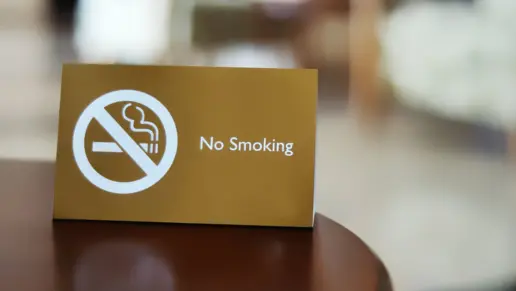Medication assisted treatment (MAT) is another tool to help individuals facing the challenges of alcohol or other substance use disorders. MAT is used along with behavioral therapies, peer support and aftercare to provide safety and stability in the earliest stages of recovery and is often a component of long recovery for many people.
This article will help you better understand what MAT is and why it’s beneficial, what medications are utilized and how it complements a comprehensive treatment plan. You’ll also learn about the logistics like the general price tag and how to find a MAT treatment provider near you.
Key Facts
- Medication assisted treatment is a critical part of addressing opioid use disorders.
- For those with acute conditions MAT can begin as early as in early detox and last throughout all levels of care.
- MAT is used in conjunction with traditional therapy.
- Critics contend that MAT swaps one addiction for another, but experts argue that isn’t so.
Introduction to Medication Assisted Treatment (MAT)
Battling addictions takes more than just psychotherapy. Many clients also need the assistance of medications. MAT provides added support by easing withdrawal symptoms and cravings and enhancing physical and emotional stabilization.
This whole person approach to addiction treatment reduces relapse and decreases the risk of drug overdose. The result is a lessening risk of infectious disease transmission and a decline in criminal activity associated with alcohol and other substance use disorders.
How MAT Fits into Modern Addiction Care
MAT may be used in the earliest stages of detox and also for long term maintenance treatment. When combined with various talk therapy approaches, 12 Step programs and aftercare MAT is an important component of a comprehensive treatment plan.
How MAT Works in the Brain
Addiction wreaks havoc on our brain’s neurotransmitters. It especially impacts those that affect our reward, motivation and mood regulation systems.
Opioid Receptor Agonists vs Antagonists
MAT utilizes FDA approved opioid agonists (methadone), partial opioid agonists (buprenorphine), opioid antagonists (naltrexone) and other medications to help those with opioid or alcohol use disorders.
These medications work by limiting or blocking drugs’ desired effects or mitigating cravings thus breaking the cycle of substance use and decreasing withdrawal symptoms and risks of drug overdose.
Impact on Cravings, Withdrawal & Neurochemistry
As addiction progresses the brain becomes accustomed to the effects these substances have on it. This creates a cycle of use to decrease cravings and higher or more frequent amounts to achieve the desired effects.
By disrupting the cycle brain chemistry becomes regulated. Your mood lightens and you’ll start to receive clarity to fully focus on the recovery journey.
Substance Use Disorders Treated with MAT
MAT isn’t a good fit for every single treatment plan. These medications are most effective when addressing conditions that involve opioids and alcohol. Here are several typical conditions that are suitable for medication assisted treatment.
Opioid Use Disorder (OUD)
MAT is considered standard practice in the treatment of OUD by many organizations. This includes the Substance Abuse and Mental Health Services Administration (SAMHSA), the Centers for Disease Control (CDC) and the American Society of Addiction Medicine (ASAM).
Individuals with OUD face withdrawal symptoms that can be extremely uncomfortable and occasionally life-threatening. The use of medications reduces these withdrawal symptoms, curbs cravings and stabilizes brain chemistry.
For this reason people who use MAT as a part of their individualized treatment plan have higher rates of treatment retention. Up to 50-80% of those who receive buprenorphine or methadone have lower risks of drug overdose especially among those who abused fentanyl.
Alcohol Use Disorder
Alcohol use disorders also carry life threatening withdrawal symptoms which is why medical supervision and medications are often needed. After withdrawal is managed MAT helps reduce cravings and support long term recovery. It lowers the risk of relapse and repeat withdrawal episodes.
One FDA approved medication to treat alcohol addictions is naltrexone. This medication blocks the euphoric effects of alcohol and suppresses cravings by disrupting the reward pathway in the brain.
Emerging Research for Stimulants & Polysubstance Use
There are currently no FDA approved medications to treat stimulant addictions. But the ADAPT-2 study found that using injectable extended release naltrexone combined with bupropion could have promising outcomes in alleviating methamphetamine addiction.
Other studies are exploring medications like mirtazapine, topiramate and modafinil but results have been mixed.
FDA Approved Medications Used in MAT
Here are a few common medication assisted treatment prescriptions. Each one addresses specific symptoms and may be a part of your program, depending on your needs.
Methadone (Full Agonist)
Methadone is used to treat opioid use disorders. It’s a long acting full opioid agonist. Methadone comes in diskette, powder and liquid forms and works by blocking or reducing the effects of opioids.
Suboxone (Partial agonist)
Suboxone is regularly used in the treatment of OUD. It’s a combination drug and contains both buprenorphine and naloxone.
- Buprenorphine is a partial agonist that attaches to opioid receptors to reduce withdrawal and cravings. While it can create some euphoria it also has a ceiling effect. This means that after a certain dose, higher doses won’t increase the effects. This lowers the risk of misuse, respiratory depression and overdose.
- Naloxone is an opioid antagonist and blocks the effects of opioids. It discourages misuse of buprenorphine by triggering withdrawal symptoms when injected or snorted.
Suboxone comes in oral film or oral tablet and is dissolved under the tongue.
Buprenphorine also comes in extended release form. Sublocade or Brixadi are given monthly by subcutaneous injection. This creates a deposit that slowly releases over time.
Naltrexone (Antagonist)
Naltrexone can treat opioid and alcohol use disorders by blocking the brain’s opioid receptors. This means that when an individual uses naltrexone as part of their MAT and takes an opioid such as heroin it blocks the euphoric effects and reduces relapse risk. It also decreases the rewarding effects of alcohol to lessen cravings.
Naltrexone comes in two forms. ReVia is a daily oral form. Vivitrol is a long acting injectable form.
Acamprosate (GABA)
Acamprosate is used to treat alcoholism. It works by stabilizing neurotransmitters in the brain, glutamate and gamma aminobutyric acid (GABA). By restoring the balance of these chemicals individuals have a diminished desire to drink.
Acamprosate isn’t used in alcohol detox because it doesn’t treat withdrawal symptoms but may be used to support long term recovery and help to prevent relapse.
Disulfiram (Aversive)
Disulfiram is used for alcohol use disorders. It’s an aversive drug that disrupts the body’s ability to process alcohol. It creates an unpleasant physical reaction when it interacts with alcohol and leads to headache, chest pain, sweating, vomiting and weakness.
Levels of Care & Settings for MAT Programs
MAT can be administered in several levels of care. That means this resource is present when you need it regardless of your stage in recovery.
Inpatient/Residential Rehab
The 24/7 support found in inpatient or residential programs is an ideal setting for initiating MAT. This is especially true for individuals who need medically supportive detox.
Addiction specialists recommend intensive treatment for people with moderate to severe addictions, addictions to certain substances such as alcohol, opioids, benzodiazepines and certain stimulants or who have co-morbid conditions like pregnancy, diabetes or heart, liver or kidney disease.
Many people with substance use disorders benefit from long-term use of MAT that supports recovery and prevents relapse. Starting MAT while in inpatient care helps you smoothly transition when you’re discharged to outpatient care.
Outpatient & Office Based Treatment (OBOT)
Individuals who don’t require inpatient detox or inpatient treatment may participate in MAT programs through their primary care provider or addiction specialist clinics.
These programs allow for flexibility that some people need due to family or work responsibilities. They’ll often visit their providers weekly and progress to monthly visits as stability improves.
Opioid Treatment Programs (Methadone Clinics)
These federally regulated outpatient clinics provide medications for people with opioid use disorders as part of their treatment plans. Individuals can obtain methadone or other meds while receiving close medical monitoring and support.
An individual first goes to the clinic daily to receive their dose of methadone. This daily check in with an addiction professional allows for close monitoring of complications or relapse risk.
As time progresses you may be eligible for take-home privileges at selected clinics, provided you pass drug screens and adhere to behavioral therapy and counseling.
TeleMAT & Bridge Clinic Models for Rural Access
Addiction isn’t just an urban problem. Many people living with alcohol or substance use disorders live in areas that lack access to treatment. Providers meet with clients via the internet and may utilize electronic prescribing for MAT.
Bridge clinics allow for a rapid start of MAT. This may be due to an emergency room visit or admission due to overdose. Prescribers often give enough medication to allow an individual to find long term treatment options that may be difficult to access in certain areas.
The MAT Program Journey
The process for MAT often comes in stages. Below is a general timeline of how you’ll advance through a typical MAT program.
Comprehensive Assessment & Eligibility
- Candidates meet with addiction professionals to determine if the ASAM criteria for treatment are met. This includes assessing withdrawal risk and the person’s overall physical and mental health status.
- Individuals work with addiction professionals to make decisions on which medications would be most beneficial and the level of service required.
Detox & Induction Phase
- This may include instituting comfort and medication protocols, close medical monitoring for withdrawal symptoms and potential complications and the initiation of MAT.
Stabilization & Maintenance
- During the detox process individuals are closely monitored to determine the appropriate dose to reduce cravings and ease withdrawal symptoms.
- After the initial detox, individuals who want to begin MAT for long term recovery support work with their addiction professionals to determine the proper dose, plan for continued counseling and monthly monitoring screens that often include urine drug screens and evaluation of psychosocial progress.
Tapering, Relapse Prevention & Long Term Monitoring
- Folks who use MAT work closely with their addiction team to determine if tapering or dose reductions are appropriate. Individuals receive education that reinforces overdose education and continued peer support.
What Therapies are Utilized In MAT Programs?
MAT alone isn’t the key to long term recovery. A successful program also includes different forms of therapies.
- Cognitive Behavioral Therapy (CBT)is the most common behavioral therapy approach. This goal oriented technique helps individuals recognize and replace unhealthy behaviors and develop positive coping skills for the future.
- Rational Emotive Behavior Therapy (REBT) focuses on beliefs and coping skills. Individuals recognize destructive beliefs and adopt more realistic beliefs that support recovery.
- Contingency Management (CM) rewards individuals for positive behaviors. This may be through voucher based reinforcements or prize incentives.
- Motivational Interviewing (IM) works best with highly motivated individuals and helps them to overcome the fear of change and negative emotions.
- Family and/or Couples Therapy operates through private or group sessions. It addresses the needs of both partners or family and changes unhealthy behaviors.
Peer/ Group Support, 12 Step, SMART Recovery
Along with MAT and one on one therapy, a comprehensive treatment plan should include peer support. This may be through programs such as SMART Recovery or the 12 Steps. These provide a place of acceptance and understanding and promote accountability.
Addressing Co-Occuring Mental Health Disorders
Many individuals facing the challenges of addiction also live with mental illness. In addition to MAT, integrating services to address conditions is critical for long term recovery.
Benefits & Effectiveness of Medication Assisted Treatment
According to SAMHSA MAT has cut the number of fatal drug overdoses by more than 50%. When compared to programs that advocate abstinence individuals using MAT remain in treatment longer and have better outcomes in terms of avoiding relapse. Those who use MAT have reduced criminal activity and risks of infectious disease transmission.
MAT Myths & Misconceptions
Too often people think that using MAT is trading one drug for another. But according to the CDC, WHO and SAMHSA, it’s the safest and most successful approach to beating addictions.
How Much Does Outpatient MAT Cost?
The cost varies from one location and program to another. On average:
Methadone
Weekly methadone treatment can cost up to $270 per month.
Buprenorphine
Buprenorphine treatment costs around $100 per month.
Suboxone
Suboxone treatment costs between $130 to $250 per week.
Naltrexone
Naltrexone treatment costs up to $1,175 per month.
Out of pocket expenses vary depending on insurance coverage. All state Medicaid plans currently cover MAT, and private insurance plans are required to provide the same benefits for substance use treatment that they do for other medical care.
Medication Assisted Treatment Frequently Asked Questions
Many candidates are understandably concerned about entering a MAT program. Below are some common inquiries that can help determine if MAT is appropriate for you or your loved ones.
Most people remain on MAT for at least 12 months. However, every recovery journey is different. As long as there are no negative effects, a person may remain on it indefinitely.
Yes. It’s recommended because MAT is associated with better outcomes for mom and baby.
Most people can once they have stabilized on the medication which means they’re no longer having dizziness, drowsiness or impaired judgement.
However, if a medical provider advises against it, always follow medical advice.
This depends on the person and circumstances. For instance if you live in an underserved area or lack appropriate addiction treatment facilities, telehealth is the way to go.
For some folks, the stigma surrounding mental health care keeps them from seeking a facility for care. Being in the comfort of their own home may increase compliance.
Find Treatment Near You
Rehab.com offers a directory where individuals or their families can filter treatment facilities by location, services, level of care or insurance. Connecting with a program that meets your needs is as easy as a phone call. Contact a program or call the number below, today. It may be the best decision of your life!
Call A Treatment Provider
For a conversation about what treatment options are available to you.
Make a Call
Addiction Centers Nearby that offer Medically Assisted Detox
Finding facilities near you…





